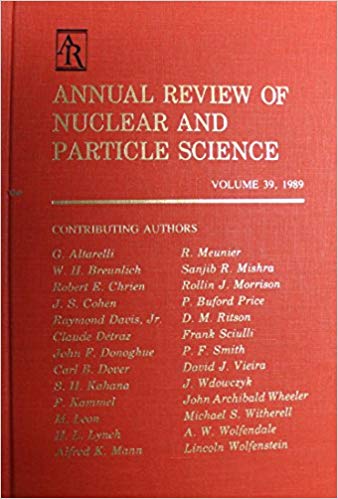原子核的晶格有效场论模拟
IF 8.4
2区 物理与天体物理
Q1 PHYSICS, NUCLEAR
Annual Review of Nuclear and Particle Science
Pub Date : 2025-06-06
DOI:10.1146/annurev-nucl-101918-023343
引用次数: 0
摘要
点阵有效场论将有效场论的原理应用于空间和时间离散化的点阵框架中。核子被放置在晶格位置上,相互作用被调整以复制观察到的核力特征。然后采用蒙特卡罗模拟来预测核少体和多体系统的性质。我们回顾了基本的方法和一些理论和算法的进展,这些已经被用来进一步我们对原子核的理解。本文章由计算机程序翻译,如有差异,请以英文原文为准。
Lattice Effective Field Theory Simulations of Nuclei
Lattice effective field theory applies the principles of effective field theory in a lattice framework where space and time are discretized. Nucleons are placed on the lattice sites, and the interactions are tuned to replicate the observed features of the nuclear force. Monte Carlo simulations are then employed to predict the properties of nuclear few- and many-body systems. We review the basic methods and several theoretical and algorithmic advances that have been used to further our understanding of atomic nuclei.
求助全文
通过发布文献求助,成功后即可免费获取论文全文。
去求助
来源期刊
CiteScore
21.50
自引率
0.80%
发文量
18
期刊介绍:
The Annual Review of Nuclear and Particle Science is a publication that has been available since 1952. It focuses on various aspects of nuclear and particle science, including both theoretical and experimental developments. The journal covers topics such as nuclear structure, heavy ion interactions, oscillations observed in solar and atmospheric neutrinos, the physics of heavy quarks, the impact of particle and nuclear physics on astroparticle physics, and recent advancements in accelerator design and instrumentation.
One significant recent change in the journal is the conversion of its current volume from gated to open access. This conversion was made possible through Annual Reviews' Subscribe to Open program. As a result, all articles published in the current volume are now freely available to the public under a CC BY license. This change allows for greater accessibility and dissemination of research in the field of nuclear and particle science.

 求助内容:
求助内容: 应助结果提醒方式:
应助结果提醒方式:


